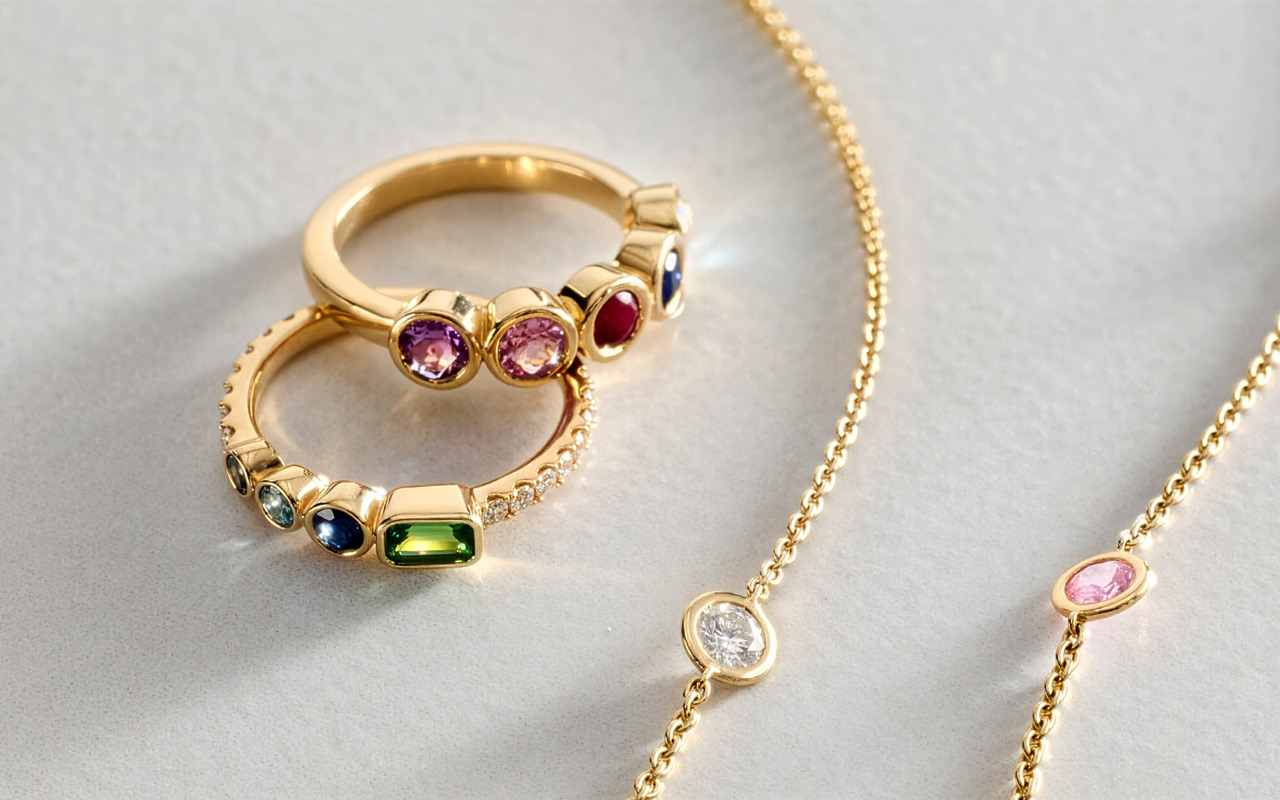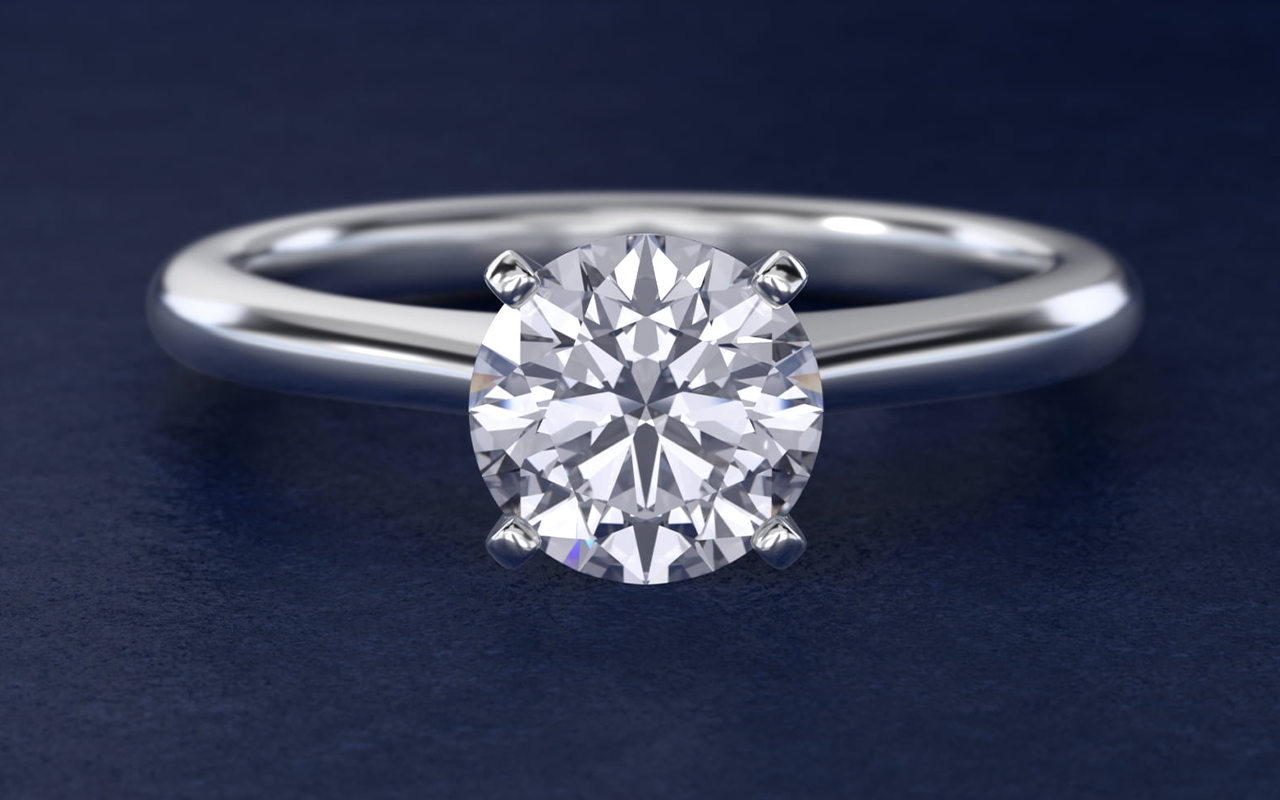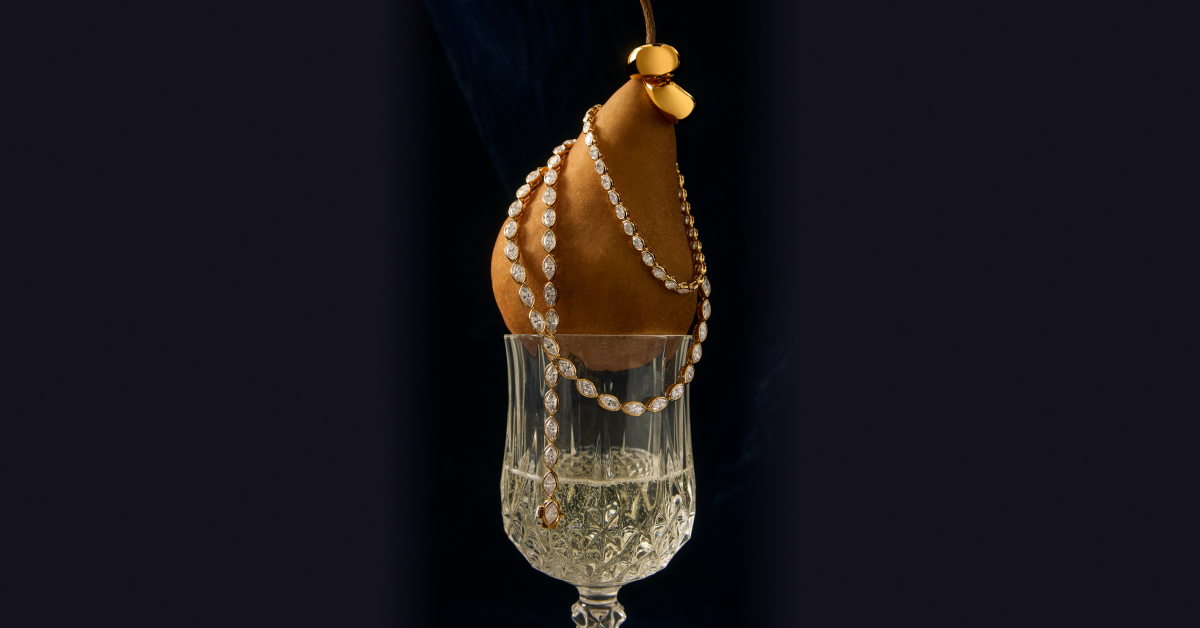While you might think of all diamonds as purely clear, there is actually a wide range of diamond colors. Some diamonds are tinted yellow or brown. If that’s not what you’re looking for, you’ll want to search for diamonds at the higher end of the diamond color grading scale. The most desirable are the three in the “colorless” range: D, E and F.
As the second-best color on the scale, an E color diamond is visually indistinguishable from a higher-rated D or slightly lower-rated F. So is it worth it to purchase an E? Below, we’ll explore what an E color diamond is, how an E color diamond compares to other color grades, if it’s a good choice, how natural vs. lab-grown ones compare and discuss which cut, color and clarity pairs best with E diamonds.
What Is an E Color Diamond?
An E color diamond is the second-highest ranking gemstone color on the diamond grading scale.
Sitting in the top group of “colorless,” (D, E and F), an E color diamond is icy white and virtually colorless to the unaided eye.
Because they are in this premium group, E color diamonds are not the most budget-friendly diamonds, but they do make for precious, visually stunning pieces of jewelry.

Color and the 4Cs
Along with clarity, carat and cut, color is one of the 4Cs of diamonds. The 4Cs determine a diamond’s quality according to set industry standards.
Ranked from D to Z, the diamond grading scale determines how colorless a diamond is. Here’s where each letter falls:
- D, E, F: colorless
- G, H, I, J: near colorless
- K, L, M: faint yellow
- N, O, P, Q, R: very light yellow
- S, T, U, V, W, X, Y, Z: light yellow
How Does E Color Compare to Other Grades?
With their colorless appearance, E color diamonds are highly desirable, beautiful diamonds. They are visually indistinguishable from D diamonds, especially once set. As the GIA notes, only expert gemologists with the proper technology can discern the differences.
Below, we’ll compare E color diamonds to other color grades.
Color Grades
Appearance Difference
Price Difference
E vs. D
E vs. F
E vs. G
E vs. Lower grades

Is an E Color Diamond a Good Choice?
A color grade E diamond is a great choice for gorgeous, long-lasting jewelry. However, because E is the second from the top in terms of color grading, it will come with a higher price tag.
Here are some additional considerations when it comes to E diamonds.
Engagement and Wedding Rings
When choosing an engagement ring, many consider premium choices like E diamonds. They’re exceptionally bright and remain that way over time. While E diamonds are quite pricey and may not be worth it to many for other types of jewelry, they are a more popular option for once-in-a-lifetime purchases like engagement and wedding rings.
General Wear Jewelry
While E color diamonds are beautiful and durable, they may not be the best value for general wear jewelry. The difference between E color diamonds and others in the colorless or near colorless range is microscopic, almost impossible to see without lab equipment. So unless the color grading matters a lot to you, you may be paying hundreds more for an E color diamond for an extremely subtle difference.
With White Gold or Silver
The metal used for the setting of a diamond ring can have an impact on how the color of a diamond appears. When choosing a gold, consider that many point to white gold as a great metal for E color diamonds. That’s because the cool-colored metal doesn’t take away from or influence the icy colorlessness of an E diamond. The same goes for silver.
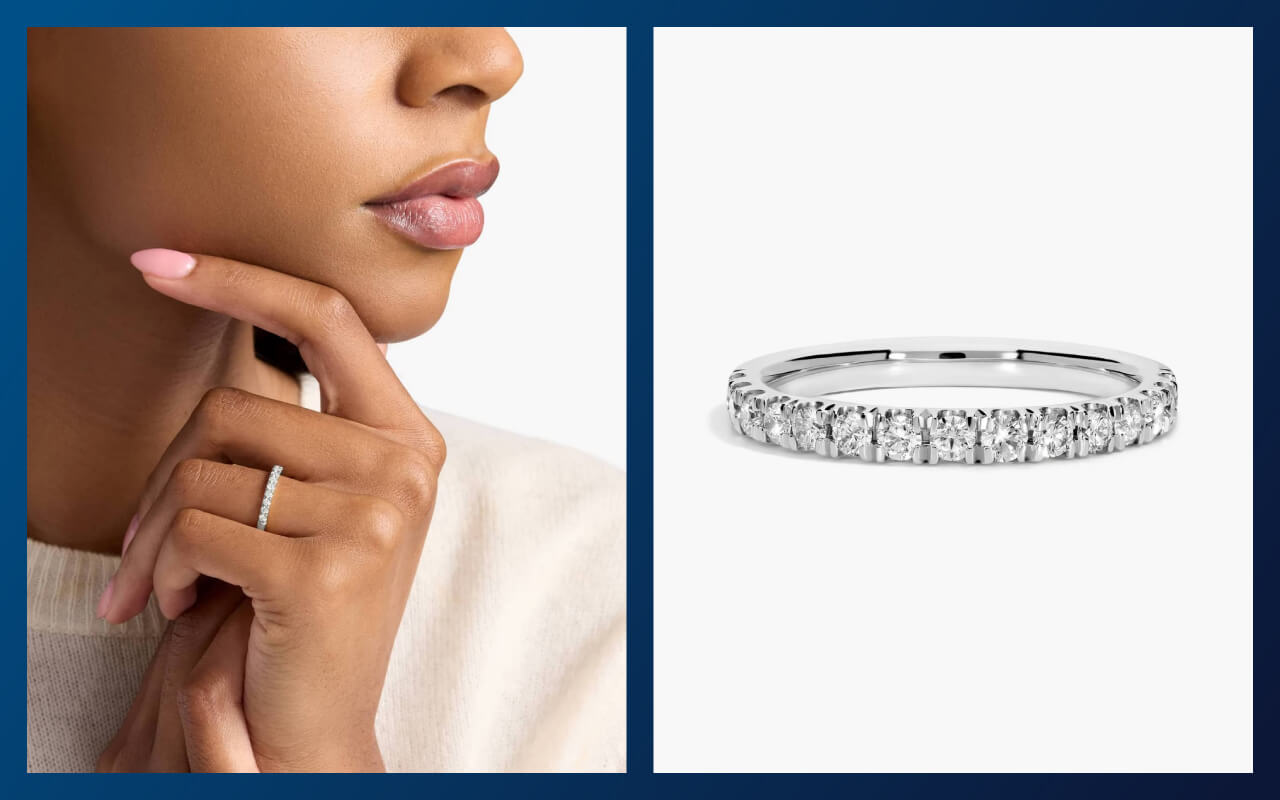
With Platinum
Since platinum is a particularly premium metal, it can be a good (but expensive) pairing for an E color diamond. Platinum is cool-toned, which enhances the whiteness of the E diamond. Platinum is also an extremely high-end, durable metal.
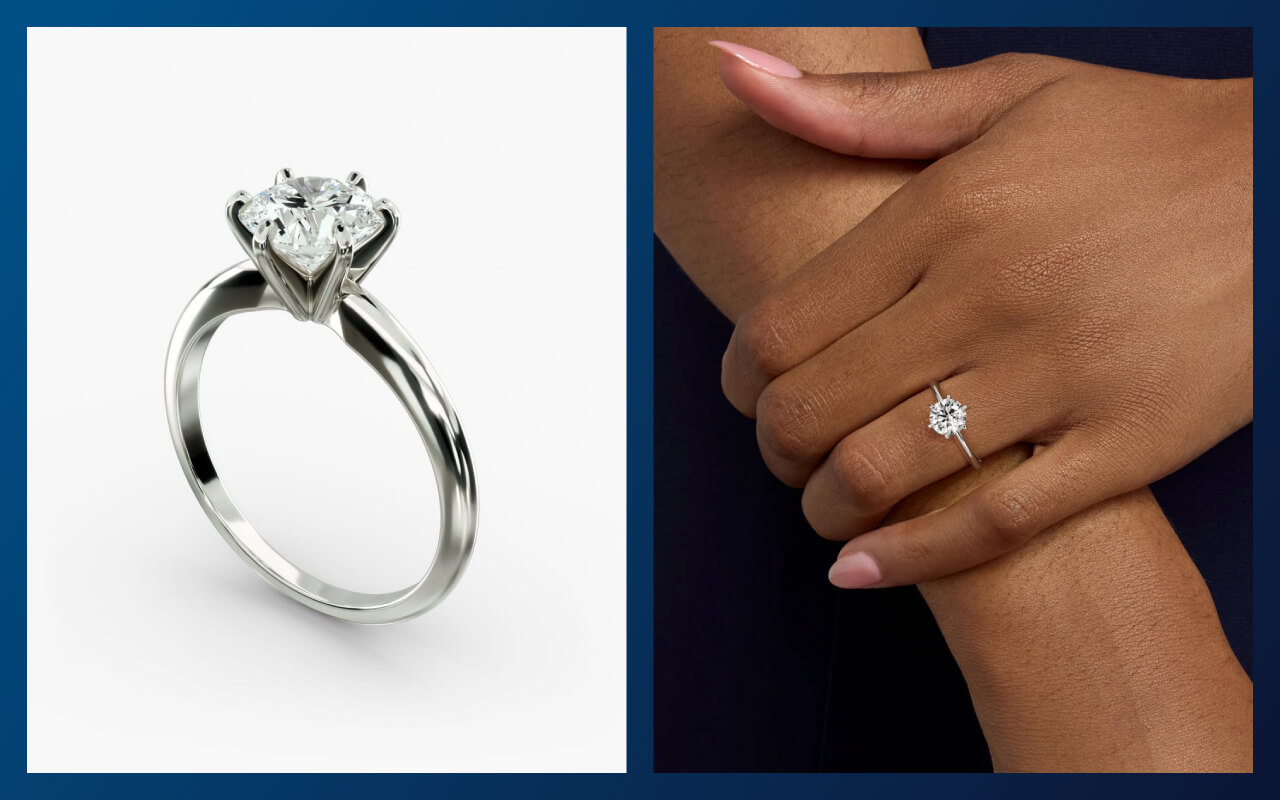
With Yellow Gold
Some find that E color diamonds don’t go as well with yellow gold because the warmth of the gold may take away from the iciness of the diamond. However, if you love yellow gold and don’t mind this, it will still be a beautiful pairing.

How to Choose the Best E Color Diamond
Set on an E color diamond? Below, we’ll walk through some important considerations to help you choose the perfect one.
Natural vs. Lab-Grown
First, you’ll want to decide between a natural or lab-grown diamond. Some people prefer the rarity that comes with a natural diamond formed over millions of years. But lab-grown E color diamonds are just as beautiful as natural ones, with an identical chemical makeup, hardness and sparkle.
The difference is that lab-grown E diamonds are available at a lower price tag, so you can get the benefits of an elite colorless diamond at a more affordable price. The downside is they don’t have as much resale value as natural mined diamonds.
Setting Type
If you have a prime E color diamond ring, you’ll likely want the focus of your ring to be on the diamond itself. That’s why a minimalist setting, like a solitaire, can be a good choice. This lets the diamond stand alone as the star of the show.
A halo setting, with a ring of smaller, surrounding diamonds, can also work well with E color diamonds.
Cut and Shape
The cut of a diamond has an even bigger impact on its appearance than color. With an E color diamond, look for excellent cuts that make the diamond appear brighter and maximize its brilliance.
As for shapes, a round brilliant is the most classic choice that does the best job of enhancing sparkle. Other shapes that look great with E diamonds are oval, cushion, emerald and radiant.
Clarity
Clarity measures how many inclusions a diamond has. Inclusions are tiny imperfections in a diamond, like fractures, cloudiness and crystals. Because an E color diamond is so white and colorless, it hides its inclusions very well. Therefore, you can get away with a somewhat lower clarity without it being noticeable.
VS1 and VS2 are great options for E diamonds. They are “eye clean,” meaning there are no inclusions visible without lab equipment or magnification.
Carat
Another big decision is the carat of your diamond. 1 to 1.5 carat diamonds are popular for engagement rings, while a diamond that sits just below a whole carat can reduce the price quite a bit. For a large statement ring, 1.75 to over 2 carats come with heftier price increases.
E Color Diamonds Are Beautiful Alternatives to D
Now that you know what an E color diamond is, it’s time to start shopping for your perfect fit. If a colorless ring is what you’re looking for and D color diamonds aren’t in your price range, look no further than E.
Browse our selection of E color diamonds at Blue Nile, where we make it easy to customize your search and find your perfect match.
Frequently Asked Questions
No, E color diamonds appear icy and colorless in real life. They fall in the “colorless” range of the diamond color scale.
No. With the unaided eye, E diamonds look almost exactly the same as D color diamonds. Only professionals with lab equipment may be able to discern a slight difference in color.
Yes. Although E color lab-grown diamonds don’t have as much resale value as mined E diamonds, they are visually and chemically identical and just as beautiful.
An E diamond is worth the cost only if knowing you have a “colorless” grade diamond is important to you. If it’s not, it may be a better choice to get a diamond a few color grades down, as the difference will be either imperceptible or very slight.
Solitaire and halo settings are minimalist choices that focus on the diamond itself. This is ideal for E-color stones since their main appeal is their stunning icy color. Platinum and white gold settings help enhance E diamonds’ iciness.



